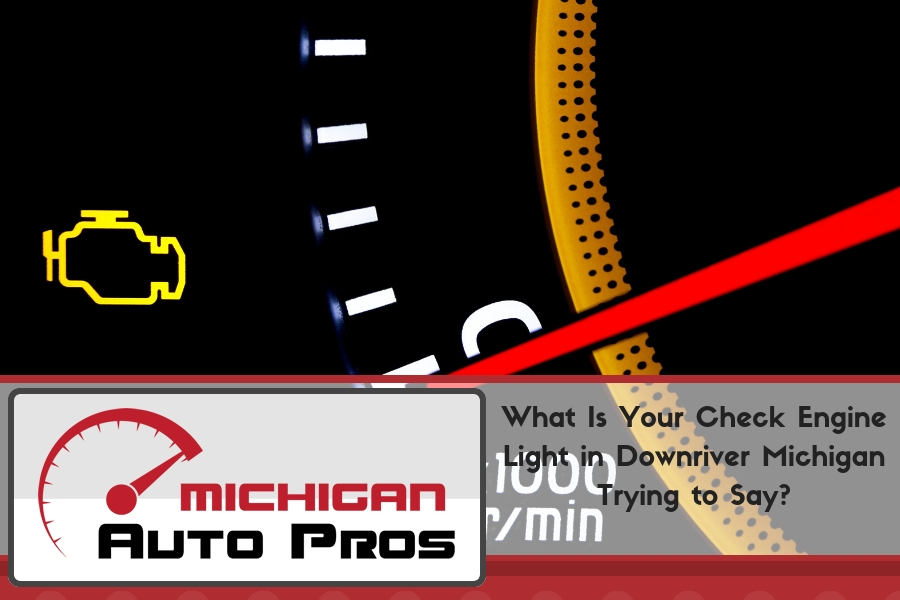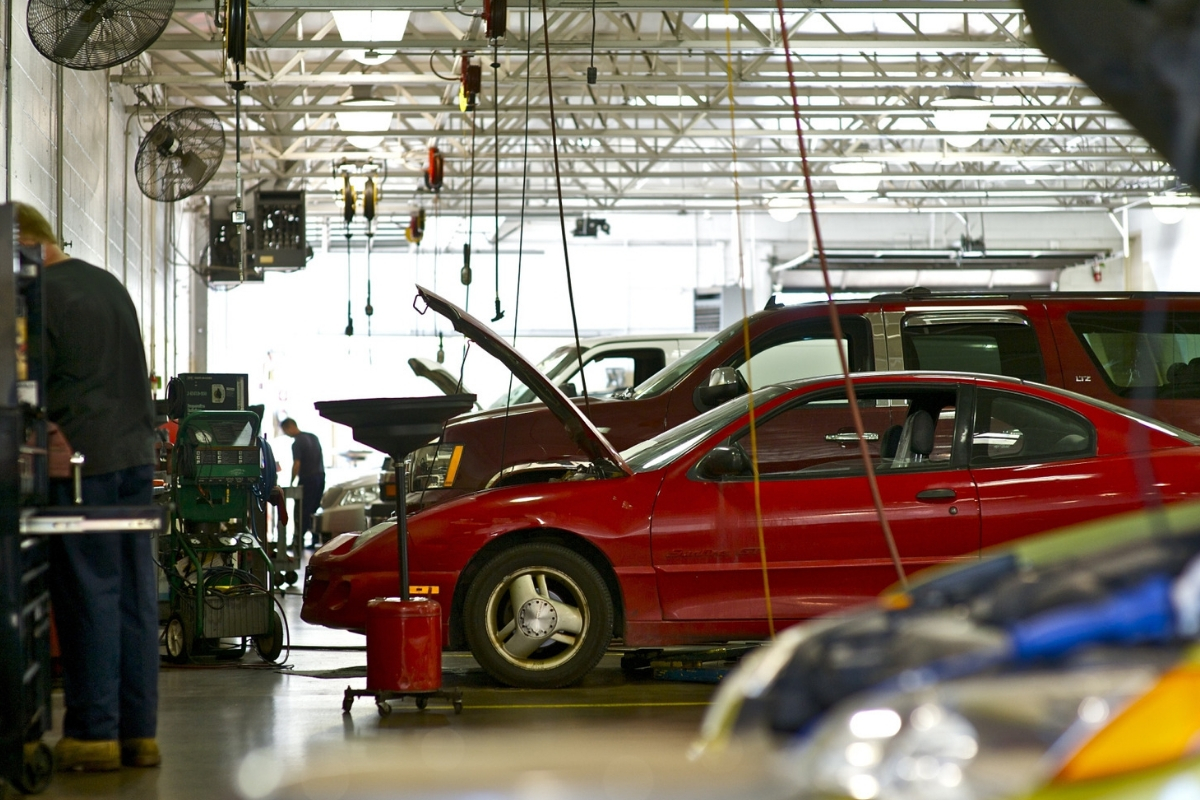Check engine lights have been sending shivers down the spines of drivers ever since computers took control of cars. You know the one – that orange light vaguely resembling the outline of a motor, usually offset to one side of the speedometer. If you’re like many, the sight of this orange eyesore leaves you wondering how you’ll scrounge up funds to cover mounting repair bills, all while images of smoke pouring from under the hood of some hapless motorist start to materialize. The infamous check engine light in Downriver Michigan can indeed be the precipice for which major car trouble teeters upon, but really, the fix might be simpler than you think. Let’s look under the hood to discover just what the check engine light really means, and why it came on in the first place.
What Is Your Check Engine Light in Downriver Michigan Trying to Say?
Onboard Diagnostics
Your vehicle features an onboard diagnostic system, typically referred to as “OBD”, and the check engine light (or “CEL”) is a component of that system. Overseeing virtually all functions of your engine, the engine control unit (“ECU”) is a small but advanced microcomputer responsible for making rapid, frequent adjustments to critical engine systems as you drive. Without delving too deep, the ECU can assess atmospheric conditions, driver input, and even fuel quality to make minor adjustments on the fly, and keep your vehicle running properly. As you can see, the ECU has a lot on its plate. When it comes across a problem it cannot fix, it communicates with your car’s OBD and tells it to display a check engine light. OBD capabilities have advanced tremendously over the years, with an enhanced focus on emissions systems as mandated by federal law.

Why is my check engine light on?
Okay, you’ve got a check engine light in Downriver Michigan. The reasons vary between makes and models, but they all get back to the fact that your car has discovered an issue beyond what it can adjust itself. Now, this may be something as simple as a wire to a sensor having come loose and needing to be plugged back in. Most of the time, the reason for the light is a mystery to the driver. However, the car does know why the light is on, and it assigns a numerical code to the issue. Vehicles generally don’t state the code (or better, decode if for you) explicitly, but some do. If your car doesn’t, it’s easily achieved with the proper tool. Many auto parts retailers, and virtually all service shops have the tools needed to decode the check engine light. This is usually referred to as “pulling the codes” and serves as a starting point to finding the specific area in need of maintenance.
The Gas Cap Trick
While it’s always advisable to bring your car to a qualified technician, especially with something as potentially dire as a check engine light, there is a fix that anyone can try – the ‘ol gas cap trick. Check your gas cap, and make sure it’s tight. Turn it so it clicks a few times. Some cars feature a display that informs drivers that their cap is loose, but many do not and will simply display a CEL. Because onboard diagnostics are tied closely to vehicle emissions, a loose gas cap will often lead to a check engine light due to volatile gasoline vapor escaping, which of course is a pollutant. Tighten the cap, drive a few miles, and see if the light turns off. If not, read on.
Look for serious issues
So, you’ve checked your gas cap and the check engine light is still on – don’t panic. If the light remains a solid orange it’s generally not an emergency, but you should get to a service center at your earliest convenience. It is important to be mindful of any unusual sounds or smells, or if your vehicle drives differently or feels down on power.
If your check engine light is flashing, this indicates a serious issue and you should pull over in a safe location and contact roadside assistance. A flashing check engine light may be accompanied by your oil light or coolant temperature light. Low oil pressure and high coolant temperatures need to be taken seriously. Continued driving under either of these conditions will result in catastrophic damage to the motor. If your engine is misfiring (as indicated by a blinking check engine light) unburned fuel is being introduced to your exhaust system, which will soon ruin a catalytic converter – a costly repair. Because most vehicle ECU’s are programmed to compensate for engine faults, the driver may feel a loss of power when driving with a check engine light. This is because the ECU has limited the engine’s output to reduce load and hopefully prevent further damage.
Cold Weather
It’s worth mentioning that cold weather does more than deflate tires. It can kill batteries, make cars hard to start and leave rubber components hard and brittle. It can also result in check engine lights. There are strategically placed sensors and solenoids throughout your vehicle, and if they become too cold they may freeze, and wont properly function. This generally results in a check engine light that may go away on its own. If you start your car during a particularly cold morning and notice the orange light pop up, it’s probably okay to drive your vehicle, and it may go away on its own as the car warms up. If not, schedule an appointment with your technician to pinpoint the issue.
Time to take it in
Generally, cars displaying check engine lights will not pass inspection. While it’s true you may be able to drive indefinitely with a CEL, many states have laws prohibiting a vehicle from wearing a fresh inspection sticker if the light is on. At best, driving with a check engine light means your vehicle is likely producing increased pollution and probably costing more in gas.
At Good Care Auto in Downriver Michigan, they have a team of highly trained technicians equipped with the latest tools and cutting-edge diagnostic equipment who can diagnose and repair your check engine light in Downriver Michigan and get you back on the road. Don’t drive in worry, call Good Care Auto at (734) 285-1188 and let them resolve your check engine light in Downriver Michigan today.
